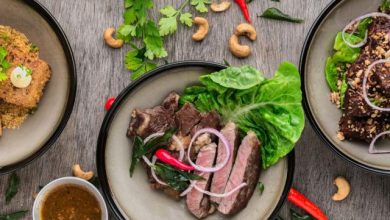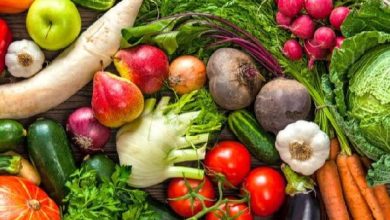How much does healthy food cost for a family of four
Friends of my acquaintances regularly come to me and ask me to help them in a “unique” situation: a healthy diet is too expensive, but I want to improve my health. Customers also often ask about budget products that will help make their regular diet healthier.
What motivated me to switch to a healthy diet
Ten years ago, I was sure that healthy eating is long, expensive and difficult, so it doesn’t suit me. When I came across recipes for healthy dishes, I read the ingredients, the cooking time – and went back to cook the dumplings.
My ideas about healthy eating were greatly distorted: it seemed that only those who had a lot of free time and mental strength could do it. My free time became less and less every year. Therefore, I began to change the diet in order to simplify the dishes and reduce the time for cooking.
What you eat
At some point, I realized that it is more profitable to experiment with inexpensive products, so I began to cook various cereals more often, discovered the benefits of frozen vegetables. Eventually, I discovered that whole foods – the kind that no one had tried to cook before me – had a ton of uses. This is how my journey to healthy eating began. But the initial priorities – simplicity and speed of preparation – remained unchanged.
I have two children, work and many other important and interesting things besides cooking and grocery shopping. Therefore, I try to keep everything in our refrigerator so that even a seven-year-old child can prepare a balanced breakfast or take away a healthy snack. I’ll tell you how I do it.
/ save / food-hack /
First, let’s take a look at what foods are needed to make the menu healthy and balanced. The WHO and Worldwide Healthy Eating Recommendations include all five food groups in the daily diet:

Vegetables and fruits
In my practice, I have never met people who do not get their protein intake. But those who do not eat even a minimum of vegetables, I meet regularly. Therefore, I recommend to my clients to start planning the menu with vegetables.
The minimum amount of vegetables and fruits for an adult per day is 400 g. If you are not used to using kitchen scales, it is more convenient to measure in portions.
For convenience in calculating food expenses, I will use grams. 400 g is the minimum daily allowance for vegetables and fruits. But in fact, we eat 600 g per adult and 400 g per child per day. In total, it turns out that for a week we need 14 kg of vegetables and fruits for four. It sounds intimidating, but in reality it is not that much.
Any kind of vegetable will do: fresh, frozen, or even canned, if it’s not the only vegetable in your diet. They can be eaten raw, stewed, baked, soup cooked. The filling for pies also counts. But potatoes are not taken into account: they are rich in starch and rather serve as a source of energy, therefore they are classified as complex carbohydrates. You can and should eat potatoes, but besides them, you still need to eat another 400 g of other vegetables per day.
WHO Report: Diet, Nutrition and Chronic Disease PreventionPDF 772Kb
The 14 kg of vegetables and fruits we eat a week is not 10 kg of cucumbers and 4 kg of tomatoes. The diet should be varied, and vegetables and fruits should also be colorful. Therefore, the more flowers there are in our menu, the more different nutrients we will get from it.
Journal of Nutrition and Metabolism Study on the Health Effects of Fruit and Vegetable Colors, 2019
And it is also important to eat greens – it is impossible to overdo it with it in the diet. But when it lies in a bundle in the refrigerator, it’s lazy for me to wash and cut it every time, and in a week we will eat a little of it: 30-50 grams. Therefore, I wash the greens in advance, cut them, salt them and store them in a jar.

I will show you an example of our purchase of fruits and vegetables for a week. In the store, the children took apples, pears, bananas, tomatoes, kiwi, cucumbers, grapes, beets, carrots. I took celery, cauliflower, avocado, and zucchini. Husband – eggplants, grapefruits, three bunches of greens and a radish. Another onion, we have it in almost every dish.
We looked at what colors are missing in our basket: purple and green. Add red cabbage and a pack of frozen green beans. Children in the freezer department chose frozen cherry packaging and berry mix packaging.
Sources of protein
Nutritionists around the world recommend eating 2-3 servings of protein-rich foods a day. That’s about 18 servings per family member per week.
Dietary recommendations of medical organizations:
British Heart Foundation,
Ministry of Health Australia,
US National Institutes of Health
Protein is often associated exclusively with meat, but it is also abundant in legumes, fish, eggs, soybeans, chickpeas, asparagus, tofu, buckwheat, quinoa, avocados, nuts, and seeds. The UK Department of Health notes that legumes are a good alternative to meat: they contain less fat, but more protein and fiber.
For me, the main bonus of legumes is that they require less skill to cook than meat. And they are even cheaper.



